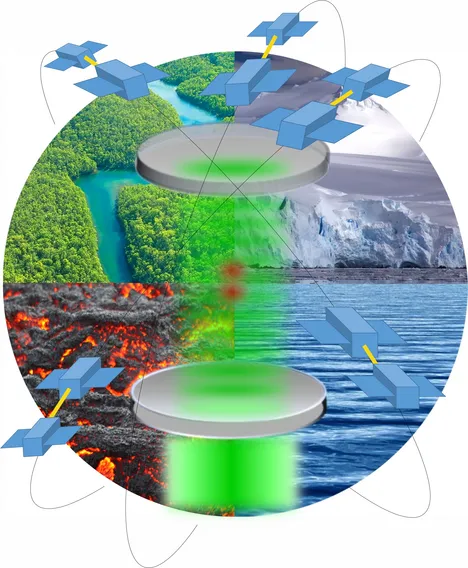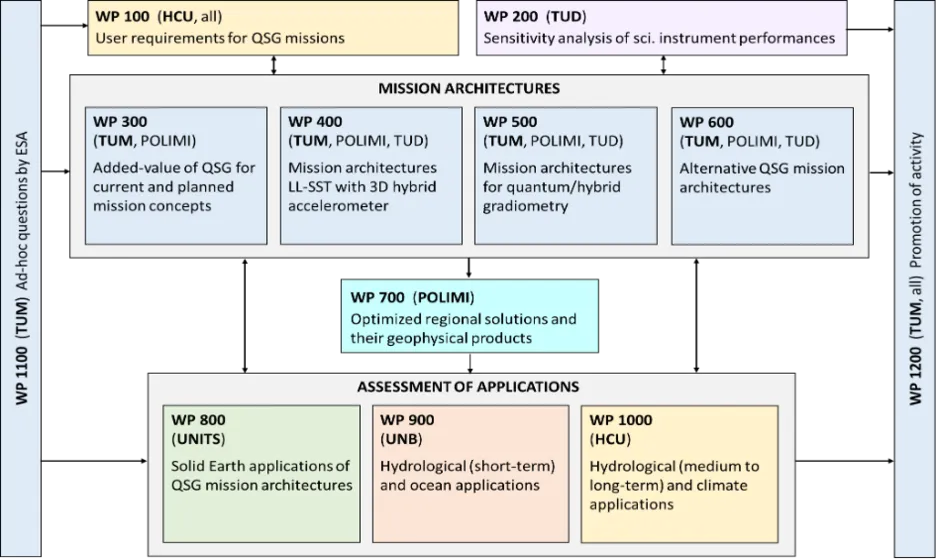
Quantum Space Gravimetry for monitoring Earth’s Mass Transport Processes (QSG4EMT)

Gravity field observations are a unique measurement technique to observe and monitor mass and mass transport in the Earth‘s system. Sustained gravity field observation from space contributes significantly to a number of Essential Climate Variables (ECVs) as defined by GCOS, and directly measures changes of the newly adopted ECV “Terrestrial water storage”.
Next Generation Gravity Missions are expected to enhance our knowledge of mass transport processes in the Earth system, establishing their products applicable to new scientific fields and serving societal needs. Compared to the current situation (GRACE Follow-On), a significant step forward to increase spatial and temporal resolution can be achieved by new mission concepts such as the joint NASA/ESA mission concept Mass change And Geosciences International Constellation (MAGIC).
As core component of ESA’s Accelerator “Space for a Green Future”, a quantum gravity mission constellation has the high potential to further to acquire unprecedented data on key Earth processes, to enhance climate monitoring, and to cope with impacts on water cycle (groundwater changes, droughts, floods, extreme weather events) and sea level rise.
In this ESA-funded project we will develop the user requirements and needs of quantum space gravimetry mission concepts and the sustained observation of climate signals. We will also analyze the error budget of current gravity satellite missions in order to identify the biggest error contributors, and discuss potential future improvements regarding instrumentation, satellite constellations and processing techniques to meet these requirements, with the focus on low-low inter-satellite tracking mission constellations, quantum gradiometry and combined concepts. The main advantage of quantum instruments is their close to flat error spectrum, thus reducing high-amplitude long-wavelength errors of classical electrostatic accelerometers.
The main advantage of quantum instruments is their close to flat error spectrum, thus reducing high-amplitude long-wavelength errors of classical electrostatic accelerometers. We will evaluate and quantify the impact and the potential of these new sensors for future gravity observation from space, and their potential for an improved monitoring of climate-induced processes in the Earth system in the fields of continental hydrology, climate modelling, oceans and solid Earth.
The project was kicked-off in September 2022.
